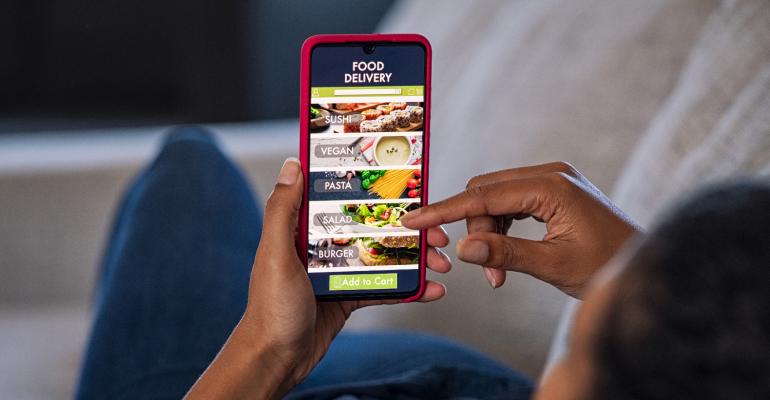Virtual restaurants — online-only establishments with no public-facing outlets — have long existed alongside third-party delivery aggregators like UberEats and DoorDash, but the pandemic has radically expanded their reach and changed the dominant business model. Previous virtual restaurant concepts were often vertically integrated, with now defunct startups like Maple and Green Summit owning and operating their own ghost kitchens and, in some cases, operating their own apps and even providing delivery. However, 2020 saw an explosion of interest in businesses like Nextbite and Franklin Junction, which connect existing virtual brands with independent restaurants with extra kitchen capacity, with the latter often fulfilling delivery orders for a range of different virtual brands. Much of this spare capacity was driven by the pandemic, of course, with restaurant operators looking to new brands as a means of survival.
Many of these new brands are extremely straightforward in presentation and are centered on QSR favorites that travel well, with chicken wings in particular exploding in popularity across the major U.S. delivery apps. They are designed to be easily searchable within the app, recalling the multitude of commodity product manufacturers found across Amazon for items like phone chargers, selfie sticks and so on. In theory, virtual restaurants allow for more experimentation, given lower startup costs and easier menu optimization than a brick-and-mortar restaurant. The virtual brands that took off in 2020 were overwhelmingly built around highly popular items — often no more than one or two signature items per brand — which can be easily sourced and produced across a range of different kitchens. These brands were designed to serve hungry customers using apps to find and order specific items — such as wings, pizza, burgers or dessert — rather than a specific brand.
These types of virtual brands have dominated much of the discussion around delivery over the last year and a half, but it is not yet clear how durable this trend is, or whether it represents a real shift in restaurant business models or more of a transitional phase. Consumer demand for delivery is not going away — this is less a question of whether consumers will stop craving delivery wings, for instance, and more about where and how those wings are being prepared. Dedicated ghost kitchen facilities are still being built, and these could prove significantly more efficient in the long term for most kinds of “commodity” delivery production, particularly as investments in automation expand.
In any given city, the question is whether it is more efficient — in terms of price and delivery time — to produce wings, pizza, pad thai, etc. through dozens of small kitchens or through a smaller number of larger, more centralized, automated facilities. As the pandemic eventually passes, the pool of spare kitchen capacity found across independent restaurants could contract, and the amount of money available to any individual restaurant could shrink as more independent restaurants look to produce for virtual brands.
To understand where the restaurant industry might be headed, a look at the broader retail industry is instructive. Over the last 10 years, dozens of online-only, direct-to-consumer retail brands — such as Modcloth, Warby Parker and Glossier — have emerged, with many shutting down or being acquired. The remaining leaders have pivoted to a more omnichannel approach, combining apps and delivery with a select number of physical stores. These stores in particular serve as an important component of brand marketing, creating compelling and memorable experiences that drive repeat business — not unlike a good restaurant. There has also been an increase in online-only manufacturers producing essentially unbranded consumer goods, with price and search engine optimization the primary differentiators.
A similar continuum could emerge in the restaurant industry as ghost kitchens and virtual brands grow and expand to become part of most restaurants’ competitive toolbox. What we think of as premium, fast-casual brands could give way to omnichannel operators combining highly effective in-store presentations with dedicated apps and activities like shoppable recipes, cooking classes and other means of fostering long-term engagement. Meanwhile, a host of daily delivery occasions could become increasingly commodified, with highly optimized facilities producing a range of fast, low-priced favorites.
 AUTHOR BIO
AUTHOR BIO
Michael Schaefer is the global lead of food and beverage at Euromonitor International. He provides insight on consumer trends, product innovations and the evolution of eating and drinking from around the world. Michael is the primary driver for design, development and promotion of Euromonitor’s global restaurant research program, as well as its coverage of the global non-alcoholic drinks industry. He has been quoted in Bloomberg, Nation’s Restaurant News, The New York Times and The Wall Street Journal, among others. Michael holds a Master of Arts in Russian and East European Studies from Stanford University and has been at Euromonitor since 2005.





